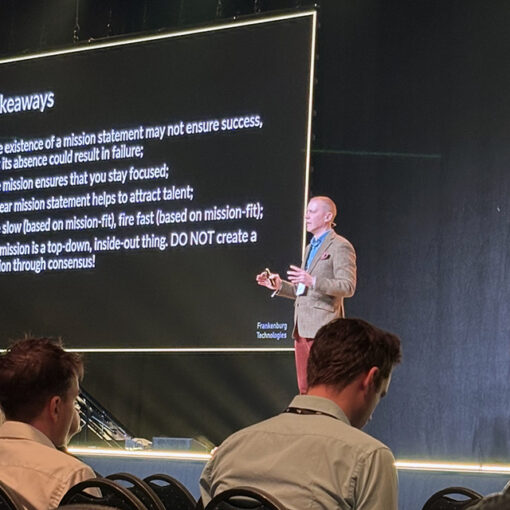Customer Experience Management (CXM) is no longer a luxury reserved for large corporations alone anymore. For small and medium-sized enterprises (SMEs), delivering consistent and emotionally resonant customer experiences can be the key to survival and growth. According to Pine and Gilmore (1999), businesses must move beyond delivering products and services to staging experiences that engage customers emotionally and create lasting value. Despite these imperatives, many SMEs struggle to assess whether they are truly ready to embrace CXM in a structured and strategic way. The fresh research highlights the need to offer reflective help to SMEs regarding their current position evaluation and to identify practical steps forward (Stephen 2025).
The case study of Eddietom Enterprises – Akure, Nigeria
Eddietom Enterprises is a small but growing business based in Akure, Nigeria. The company serves as the focal point of the thesis on Customer Experience Management in SMEs. The business operates in a vibrant and competitive urban market. Eddietom faces the dual challenge of meeting rising customer expectations while managing limited resources typical of small enterprises. Interviews with the owner and management revealed that while customer satisfaction is a priority, CXM practices remain informal and reactive. There is no structured training, no digital infrastructure for tracking customer feedback, and no documented CXM strategy. Yet, the business shows strong potential for growth through incremental improvements.
This case study illustrates the broader reality faced by many SMEs who have the desire to improve customer experience, but the path forward requires strategic planning, cultural alignment, and incremental innovation. Eddietom’s journey offers valuable lessons for other small businesses seeking to assess their CXM implementation and take actionable steps toward improvement.
In the digital age and fast-paced world, customers interact with firms through various touch points. It becomes more critical for SMEs to understand and navigate this mirage of touch points, and decipher which touch points to focus on. For SMEs, understanding customer experience across touch points alongside the entire customer journey is an important recipe for success (Lemon & Verhoef 2016). SMEs should aim at creating lasting value through sustainable actions and practices.
Continuous learning for SMEs through iteration, leading to small changes and improvisations in processes, product offerings, and services, could form the basis of competitive differentiation. SMEs need to imbibe the customer philosophy of doing the same thing over and over, improving bit by bit, and remember that there is always a yearning to achieve more together. Offering unique customer experiences, SMEs can continue to climb on their previous offerings to reach the summit but should never stop at the end goal.
Factors influencing SMEs’ customer experience management
The study sheds light on how Customer Experience Management (CXM) in SMEs is shaped by a mix of internal culture, resource availability, and strategic awareness. During the research study on Eddietom Enterprises, a Nigerian-based SME, it became clear that while the desire to satisfy customers is strong, formal CXM practices are often missing (Stephen 2025). Limited access to digital tools, informal feedback systems, and a lack of structured training all influence how customer experience is delivered. These factors do not reflect a lack of interest, but rather the operational realities many SMEs face. As Palmer (2010) emphasizes, effective CXM requires not only strategic intent but also the organizational capacity to implement and act on it. Understanding these influences is the first step towards building a more intentional and effective CXM approach.

Redefining success in the SMEs CXM
Success in Customer Experience Management (CXM) for SMEs is not just about scale; it is about consistency, empathy, and adaptability. The research study on Eddietom Enterprises, a Nigerian-based SME, highlighted that while the intent to satisfy customers is strong, formal CXM systems are often lacking (Stephen 2025).
As Palmer (2010) suggested, effective CXM depends not just on strategy but on the capacity to act. For SMEs, redefining success means focusing on meaningful engagement and sustainable practices, even with limited resources. Customer experience management for SMEs is an iterative journey where every customer touch point matters.
Authors
Stephen Oladimeji studies Business Administration (BBA) at Faculty of Business and Hospitality Management at LAB University of Applied Sciences, Lappeenranta.
Sajal Kabiraj, PhD, works as Principal lecturer at Faculty of Business and Hospitality Management at LAB University of Applied Sciences, Lahti.
References
Gariev, V. 2025. Business professionals collaborating around a conference table. Unsplash. Cited 4 Nov 2025. Available at https://unsplash.com/photos/business-professionals-collaborating-around-a-conference-table-y7xUr3aDLXc
Lemon, K.N. & Verhoef, P.C. 2016. Understanding Customer Experience Throughout the Customer Journey. Journal of Marketing, 80(6), 69–96. Cited 4 Nov 2025. Available at https://doi.org/10.1509/jm.15.0420
Palmer, A. 2010. Customer Experience Management: A Critical Review of an Emerging Idea. Journal of Services Marketing, 24(3), 196–208.
Pine, B. J. & Gilmore, J. H. 1999. The experience economy: Work is theatre & every business a stage. Cited 6 Sep 2025. Available at https://hbr.org/1998/07/welcome-to-the-experience-economy
Stephen, O. 2025. Customer Experience Management in SMEs: Case Study of Eddietom Enterprises. Thesis. LAB University of Applied Sciences, International Business. Cited 4 Nov 2025. Available at https://urn.fi/URN:NBN:fi:amk-2025111628177




